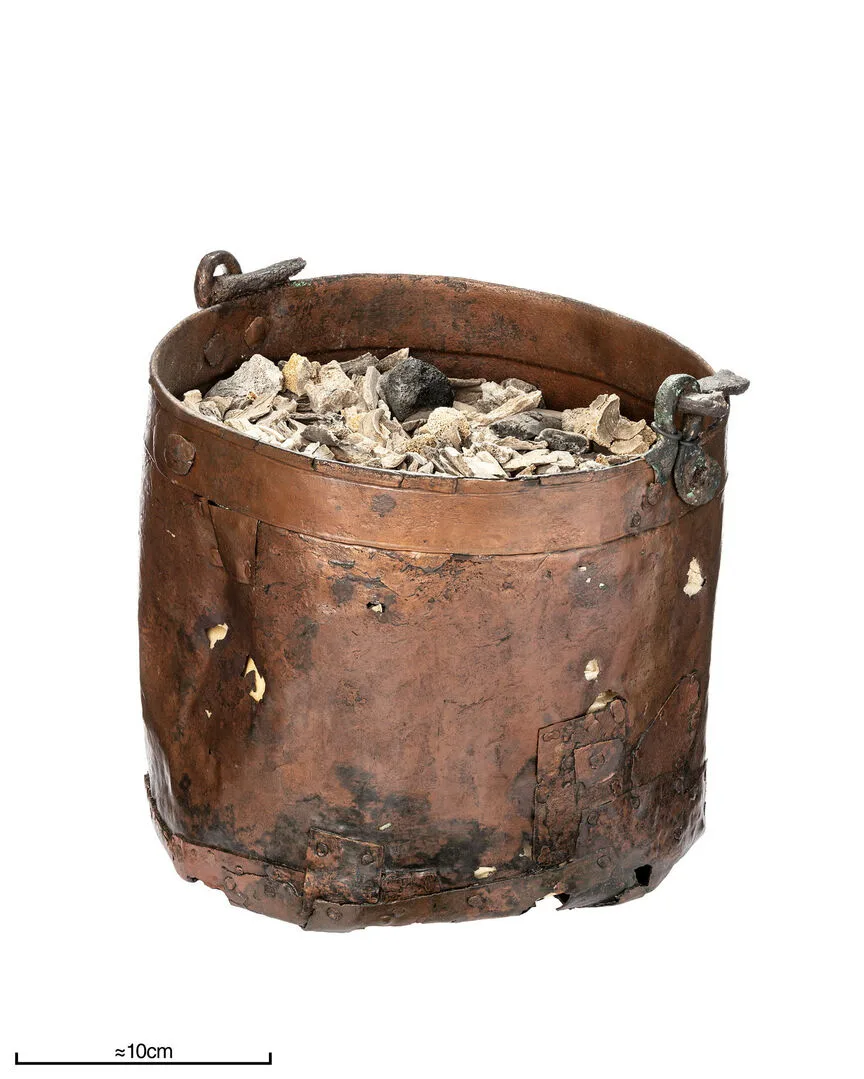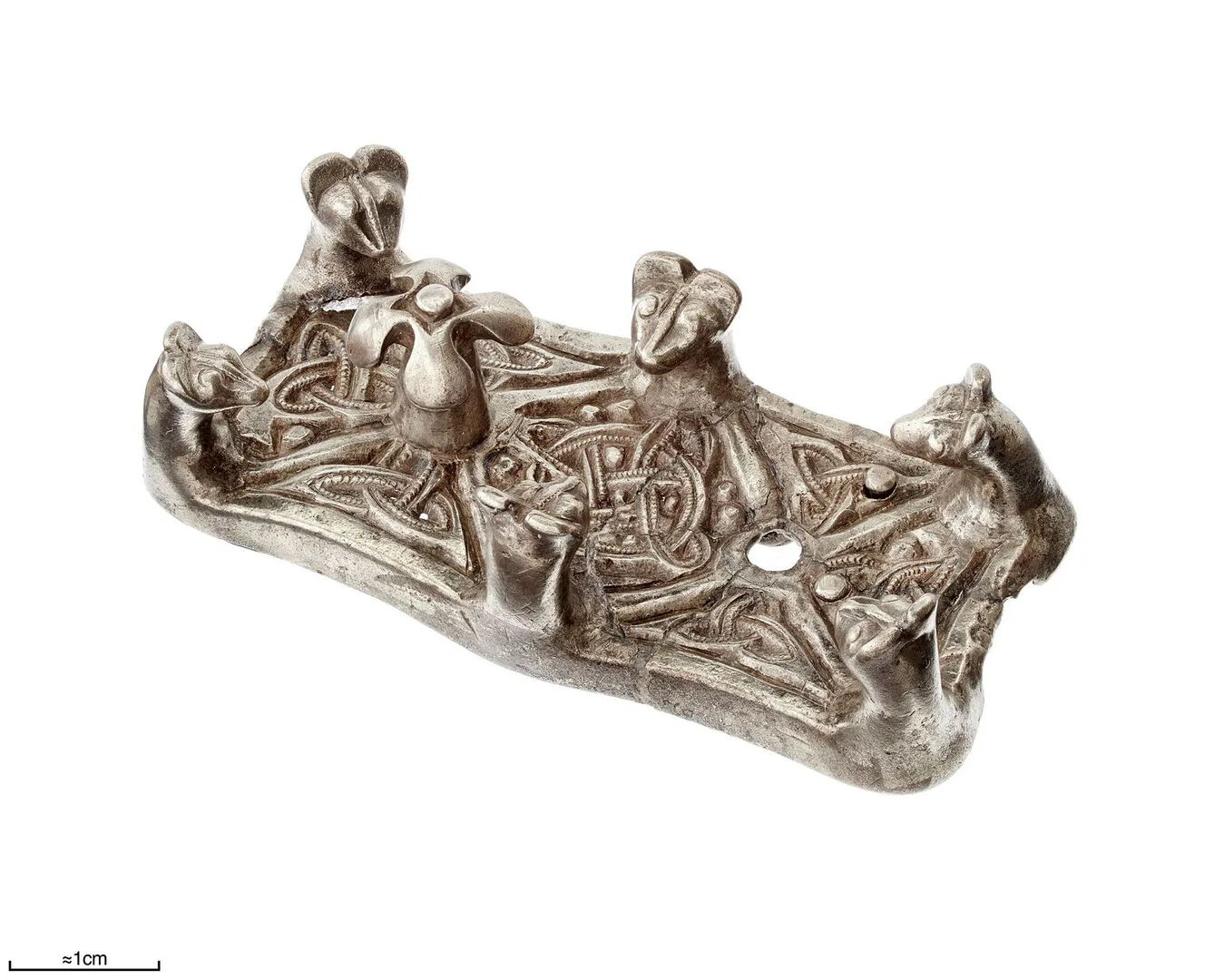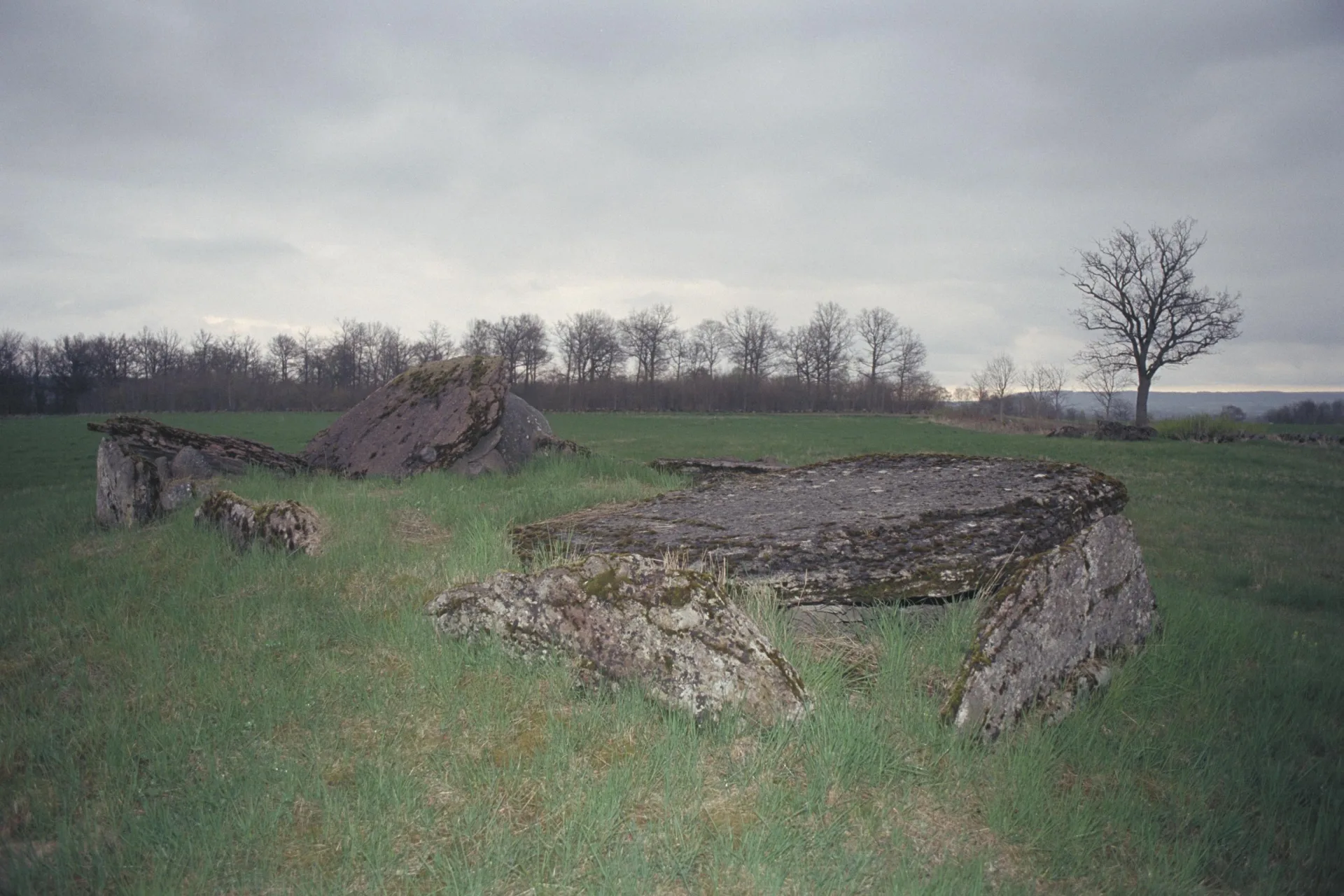Burials in the Iron Age
From skeletons and cremated remains we can also learn more about the injuries and illnesses that afflicted people. Most individuals buried during the Iron Age were cremated. In cremation graves, alongside the burnt bones, we sometimes find the remains of beads, brooches, combs and other personal belongings.
Objects such as bread or weapons could also be placed on the pyre together with the deceased. Animals, too, might be burned with the body, and cremated animal and human bones are often found mingled in the same grave.
One striking example is the bronze cauldron from Kvissleby in Medelpad, which contains cremated remains from two individuals buried together in the late Iron Age. The cauldron also held fragments of a glass beaker, bone arrowheads, and bear claws.

Burnt bones
After the funeral pyre had burned down, a small portion of the cremated remains of humans and animals was placed in the large vessel. The remains are well burnt and consist mostly of fragments. This suggests that they were handled and broken up more than the flames alone could have achieved. Grave finds from Skopintull, Adelsö parish, Uppland.
Several people in the same grave
In many burials, the cremated bones were placed in a ceramic vessel, set into the ground, and covered with a stone construction. The most common form is circular, but square and triangular settings also occur. In the later Iron Age, burials often took the form of mounds built from earth and turf.
Sometimes several people were interred within the same grave structure. This might happen at the same time in a shared container, or one or more vessels with cremated bones might be added to the mound or stone setting some time after the first burial. Iron Age graves are monuments that were often reused by the living.

Rectangular clasp
Rectangular silver clasp with six animal heads and one tree (originally two). From grave Bj 557, Birka, Adelsö.
On view at Historiska museet in the exhibition Vikingarnas världFind this object in display 59, Vikingarnas värld Monter 59
Graves tell us about life
Throughout the Iron Age, some people were also buried without cremation, particularly towards the later part of the period. Such burials are often referred to as inhumations. The body might, for example, be placed in a chamber built into the ground at the cemetery, or laid to rest in a coffin.
In certain places the dead were buried in boats. Famous examples are Vendel and Valsgärde, as well as Tuna in Alsike, all in Uppland. In Vendel and Valsgärde, only men were buried in boats, while in Tuna in Alsike both men and women received boat burials. At Tuna in Badelunda outside Västerås, it was only women who were laid to rest in boats.
Thanks to burials, many objects have been preserved in good condition. From these we know a great deal about, for instance, how people dressed and what game pieces and dice they used for entertainment. Lavish burials also reveal the exclusive and costly objects that surrounded the aristocracy. Through death, we learn much about life.

Skiff
A four metre long skiff found in a Viking Age grave in Årby, close to Uppsala. A woman, a dog and a horse were buried in the skiff.






